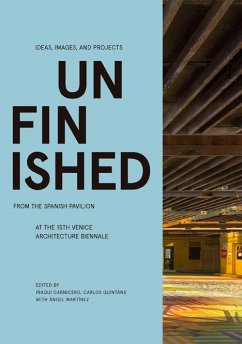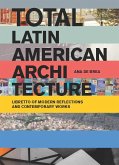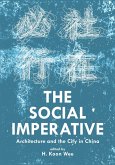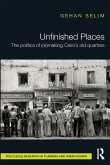The book displays the work of seven photographers and fifty five projects of architecture, presenting the problem through the unfinished constructions strewn across different points of Spain s geography, as well as five critic essays and eleven interviews with prestigious professors from the international academia.
The dictionary definition of "unfinished" presents the following synonyms: unadorned, crude, formless, imperfect, raw, rough, under construction, unfashioned, unperfected, unpolished, unrefined. All of these adjectives conjure in the imagination of designers a new type of architectural intervention that perceives the existing built environment as a constraint upon which we can leave an important but impermanent mark. In this way, architects become a link in the chain of a structure's life. Through the concept of the "unfinished," we may understand the desirability of a perpetual state of evolution of the architectures that define our societies. The architecture of the unfinished leaves open a door to the unexpected, and to ideas and interventions of the future - many of which we may not yet be aware.
This book gathers essays and interviews with international critics, together with all the photo series and projects that were exhibited in the Spanish Pavilion of the 2016 Venice Architecture Biennale, curated by Inaqui Carnicero and Carlos Quintáns, and awarded with the Golden Lion as the Best National Pavilion, that presented a selection of projects developed in the Iberian Peninsula over the last ten years that epitomize a new type of architectural intervention, showing the optimistic and creative view of those who have fought back against the recent past of economic crisis.
The dictionary definition of "unfinished" presents the following synonyms: unadorned, crude, formless, imperfect, raw, rough, under construction, unfashioned, unperfected, unpolished, unrefined. All of these adjectives conjure in the imagination of designers a new type of architectural intervention that perceives the existing built environment as a constraint upon which we can leave an important but impermanent mark. In this way, architects become a link in the chain of a structure's life. Through the concept of the "unfinished," we may understand the desirability of a perpetual state of evolution of the architectures that define our societies. The architecture of the unfinished leaves open a door to the unexpected, and to ideas and interventions of the future - many of which we may not yet be aware.
This book gathers essays and interviews with international critics, together with all the photo series and projects that were exhibited in the Spanish Pavilion of the 2016 Venice Architecture Biennale, curated by Inaqui Carnicero and Carlos Quintáns, and awarded with the Golden Lion as the Best National Pavilion, that presented a selection of projects developed in the Iberian Peninsula over the last ten years that epitomize a new type of architectural intervention, showing the optimistic and creative view of those who have fought back against the recent past of economic crisis.








